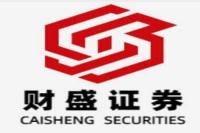China's Economic Pulse: A Deep Dive into November 2024's Key Developments
Meta Description: Uncover China's economic trends in November 2024 – from property market reforms and infrastructure spending to tech advancements and international market influences. Expert analysis and data-driven insights.
Dive headfirst into the whirlwind of China's November 2024 economic landscape! This isn't your average news recap; it's a meticulously crafted analysis that delves deep into the interwoven threads shaping the nation's financial trajectory. We'll unravel the complexities, separating the hype from the hard data, and providing you with actionable insights you won't find anywhere else. Picture this: you're navigating a bustling marketplace, the air thick with rumors and whispers of impending change. This report acts as your expert guide, illuminating the paths of opportunity and highlighting potential pitfalls. From the government's ambitious infrastructure projects and the seismic shifts in the real estate sector to the groundbreaking advancements in technology and the ever-evolving global financial climate, we leave no stone unturned. Prepare to gain a crystal-clear understanding of the forces at play, empowering you to make informed decisions and stay ahead of the curve. We're not just reporting the news; we're interpreting it, contextualizing it, and making it relevant to your world. Buckle up, because this is going to be a thrilling ride through the heart of China's dynamic economy. Get ready to uncover the untold story behind the headlines, and discover the hidden gems that hold the key to understanding China's economic future. This isn't just a report; it's your strategic advantage in the world's most dynamic market.
Government Initiatives & Infrastructure Spending
November 2024 witnessed a flurry of government initiatives aimed at stimulating economic growth and improving the lives of its citizens. The Premier's emphasis on technologically advanced "safe, comfortable, green, and smart housing" signals a significant shift in the property market. This is not merely about bricks and mortar; it's about strategically leveraging technological innovation to create sustainable and high-quality living spaces. The accompanying allocation of 6 trillion yuan in local government debt is a crucial component of this strategy, injecting much-needed capital into infrastructure projects across the country. This bold move aims to boost economic activity, creating jobs and stimulating growth in related sectors. While some provinces have already begun issuing bonds, careful monitoring of the effectiveness and potential risks associated with this massive injection of capital will be crucial in the coming months.
However, it's not just about large-scale projects. The emphasis on higher-quality living extends to addressing critical issues like improving access to essential services and infrastructure in less-developed regions. Initiatives such as the planned expansion of eVTOL (electric vertical takeoff and landing) aircraft testing in six major cities represent a commitment to innovation and sustainable transportation solutions. This forward-thinking approach demonstrates a proactive effort to address future mobility challenges and to foster technological leadership in the burgeoning urban air mobility sector.
This proactive approach is not limited to urban development. The significant investment in the second phase of the Fujian Guolei Refinery project underscores China's determination to secure its energy independence and strengthen its position in the global energy market. This massive investment, exceeding 711 billion yuan, will not only bolster domestic energy production but will also have a ripple effect on related industries and create numerous employment opportunities.
The interplay between government policy and technological advancement is particularly evident in the news surrounding the upcoming Huawei Mate 70 series launch. The anticipated unveiling of new self-developed chips and large language models underscores China's drive towards technological self-reliance and its commitment to competing on the global tech stage. The planned launch on November 26th is highly anticipated, and this strategic move should be viewed within the broader context of China's ambitions to assert its dominance on the global technology landscape. This is a significant milestone, signaling a new era of domestic innovation.
Financial Market Dynamics and Reforms
The financial markets also experienced significant shifts in November. The ongoing reforms in China's capital market, as highlighted by the China Securities Regulatory Commission (CSRC) chairman's remarks, are crucial for attracting foreign investment and enhancing the market's overall efficiency. The planned introduction of "more practical measures" to facilitate cross-border financing is likely to attract considerable attention from international investors. However, the volatility in the stock market, particularly the steep decline in some sectors, underscores the inherent risks and uncertainties present in such a dynamic financial ecosystem.
The decline in the national tax revenue and the significant drop in securities transaction stamp tax reflect the complexities of the current economic environment. While non-tax revenues increased significantly, the overall decline in tax revenues highlights the challenges faced by certain sectors, such as the stock market. Moreover, the aggressive interest rate cuts by banks, particularly those by private banks, reflect the pressure they face in the current economic climate. This action signals a move to maintain competitiveness, but also points to the underlying economic challenges.
Furthermore, the international financial landscape plays a significant role in shaping China's economic trajectory. The projected interest rate cuts in the USA and the continuing monitoring of exchange rates by the Bank of Japan underscore the interconnectedness of global markets. These developments suggest that the Chinese economy will continue to adjust to evolving global economic trends, and strategic planning and adaptation will be critical.
The developments in the Chinese stock market, including the performance of various indices and sectors, as well as the activity on the Dragon and Tiger lists, reflect the ongoing dynamic shifts within the market. The fluctuations in the volume of margin financing and short selling highlight the speculative nature of the market and the risk appetite of investors. It's crucial to analyze these developments alongside global market trends for a clearer picture. The impact of these shifts is far-reaching, affecting not just individual investors but also the overall economic climate.
Technological Advancements and Sectoral Growth
China's commitment to technological innovation is not limited to the consumer tech sector. The remarkable progress in the deployment of unmanned mining trucks, exceeding 1510 units as of September 2024, showcases the transformative power of automation in the industrial sector. The expected doubling of this number by year-end underscores the accelerating adoption of autonomous systems in resource-intensive industries. This represents a significant step towards improving efficiency, safety, and productivity within the mining sector.
The growth in the express delivery sector, surpassing 150 billion packages by November 17th, underlines the robust growth of e-commerce and the strength of China's logistics infrastructure. This remarkable volume highlights the rising consumption levels and the seamless integration of e-commerce into the daily lives of Chinese citizens. This growth underlines both the success of domestic e-commerce platforms and the effectiveness of China's logistics network.
Similarly, the advancements in semiconductor technology, such as the development of a new 6nm chip by Crystal Chip, demonstrate China's commitment to pushing the boundaries of technological innovation. This crucial advancement in the semiconductor field brings China closer to achieving technological self-sufficiency in this strategically important sector. This progress is significant, as it demonstrates China's capacity to compete with global leaders in this high-tech industry.
Real Estate Market Transformation and Housing Policies
The significant policy changes in the real estate market, such as the cancellation of the distinction between ordinary and non-ordinary housing in Shanghai and Beijing, represent a major step towards streamlining the market and boosting housing affordability. This move aims to simplify regulations, reduce complexity, and ultimately make housing more accessible to a broader range of buyers. The implications are vast, impacting not just property developers but also individual homebuyers and the broader economy.
Simultaneously, the introduction of regional differentiated household registration policies in Guangzhou aims to attract talent and stimulate economic growth in specific areas. This strategic approach is designed to address regional disparities and promote balanced development across the country. The details of these policies will play a significant role in shaping both urban development and population distribution.
Frequently Asked Questions (FAQ)
Q1: What is the significance of the 6 trillion yuan local government debt?
A1: This massive allocation aims to fund infrastructure projects, stimulate economic activity, and create jobs, contributing significantly to overall economic growth. However, it requires careful management to mitigate risks.
Q2: How will the cancellation of ordinary and non-ordinary housing standards affect the market?
A2: This simplification of regulations is expected to boost housing affordability and transparency, making the market more efficient and accessible.
Q3: What is the impact of the aggressive interest rate cuts by banks?
A3: It's a response to pressure to maintain competitiveness and profitability, while at the same time addressing the economic challenges facing the sector.
Q4: What is the role of technological innovation in China's economic strategy?
A4: Technological innovation is central to China's plan for economic growth, focusing on self-reliance in key sectors such as semiconductors and autonomous systems.
Q5: What are the implications of the developments in the global financial markets?
A5: China’s economy is inextricably linked to global trends, and understanding international market dynamics is key to interpreting the domestic economic situation.
Q6: What are the long-term implications of the real estate market reforms?
A6: The reforms aim to create a more stable, transparent, and affordable housing market, leading to long-term sustainable growth in the sector.
Conclusion
November 2024 presented a complex tapestry of economic developments in China. While the government's proactive initiatives and massive infrastructure spending demonstrate a strong commitment to economic growth, challenges remain in managing debt levels and addressing sectoral imbalances. The rapid advancements in technology offer exciting possibilities for future growth, but careful navigation of the international financial landscape will be crucial for maintaining stability and ensuring long-term success. The ongoing reforms in the financial and real estate markets are pivotal steps in improving efficiency and creating a more sustainable economic foundation. Ultimately, the success of these initiatives will hinge on effective execution, careful monitoring, and adaptability in the face of evolving global economic conditions. Staying informed about these developments is crucial for anyone seeking to understand and participate in China's dynamic economic landscape.



